Insulation & Continuity Testers
Range of insulation and continuity testing instruments including Megger insulation testers, insulation resistance testers, Fluke testers and insulation meters from Amprobe, DiLog, Seaward, Metrel, Martindale, Kewtech, Extech and more.
Find out more about Insulation & Continuity Testers below.
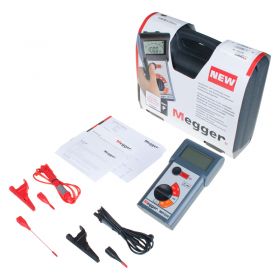
- Lightweight
- Test up to 500V
- Easy-to-use interface
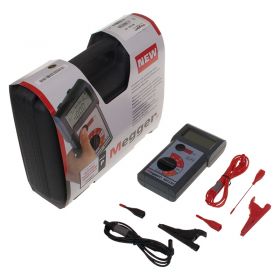
- 250V, 500V and 1000V testing capability
- Audible buzzer notifications
- Insulation testing up to 100mOhm
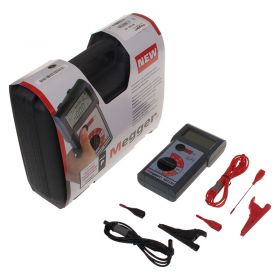
- Measure insulation resistance up to 1000 MΩ using 250V, 500V and 1000 V test voltages
- Measure continuity between 0.01Ω and 100Ω
- Integrated voltmeter and automatic test halting when a voltage of 50V or above is detected
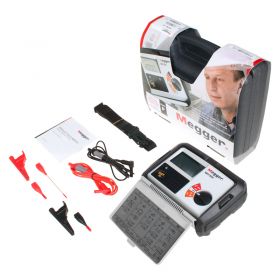
- Small and portable for testing on the go
- Selectable measurements using easy-to-use dial
- Locking capability when not in use
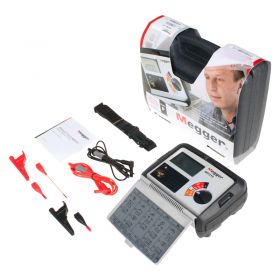
- Specifically designed by electricians to deliver optimum performance
- Automatic power down functionality to preserve battery life
- Durable and robust design
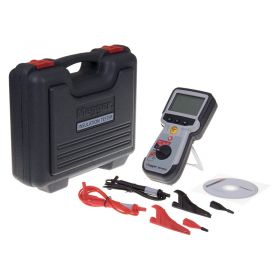
- Measure insulation with test voltages of 250, 500 an 1000V
- Also tests continuity and voltage
- Handheld, portable design
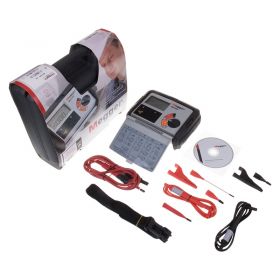
- Powerful insulation and continuity tester in a handheld, weatherproof case
- Upgraded version of the MIT310 with more measurement functions
- Safety features keep you protected when testing in dangerous situations
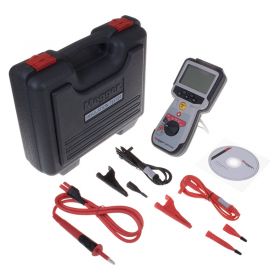
- Upgraded version of Megger's MIT400/2
- Test voltages from 50 to 1000V
- Test continuity, voltage, frequency, PI and DAR
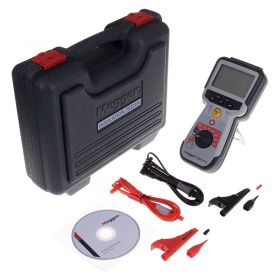
- Upgraded version of the Megger MIT415/2
- Test insulation up to 200GΩ
- Selectable test voltage of up to 1000V
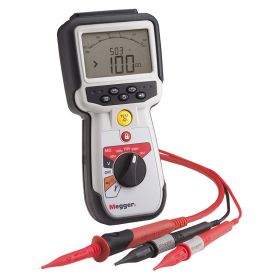
- Insulation measurements up to 100GΩ
- Portable, handheld design with IP54 protection
- Six selectable test voltages
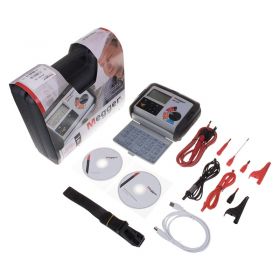
- Most advanced model in MIT300 series
- Selectable voltage range
- Also tests continuity, resistance and voltage
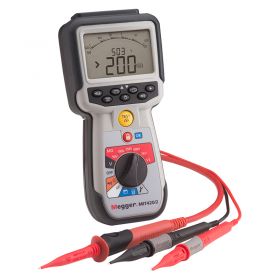
- Upgraded version of the MIT410/2 with memory storage
- Variable test voltage up to 1000V
- Handheld, portable design with built-in stand
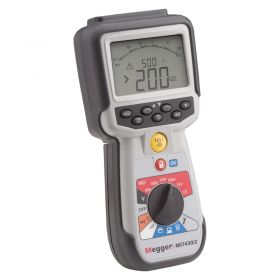
- Bluetooth memory with download to PC
- Wide range of selectable insulation testing modes
- Handheld, portable and weatherproof design
About Insulation & Continuity Testers
Insulation is a vital part of any electrical system. Correctly installed insulation ensures that the current flowing through a system remains on the designated path it should be moving through and breakdowns in the overall insulation of a system can cause leakage current to flow, leading to problems and potential hazards.
The overall insulation of any system is susceptible to degradation over some time. As standard, the insulation of an electrical system or appliance should be solid enough to constrain as much leakage current as possible until the overall level is completely negligible, but many outside factors can affect the overall insulation over some time, thus increasing the risk of higher levels of leakage current.
Parameters that can affect the overall amount of insulation present in a system vary greatly; everything from cuts in wiring, vibrations, pollution (corrosive materials), and even dust and dirt in the air can gradually erode at insulative properties, effectively rendering them less useful over time.
Insulation test equipment is designed to effectively measure the level of insulation left on an electrical system. Knowing the overall level of insulation allows the tester to determine whether the insulation is still safe for use, or whether steps have to be taken immediately to make sure that the insulation is repaired to an acceptable level.
Common insulation testers are generally used to perform two different forms of electrical measurements. These measurements are obtained by testing between the conductors that carry current when energized and other parts of the system in which no current should ever flow under normal operating conditions. To gain an overall reading of the level of insulation resistance present two things must be measured: the actual leakage current flowing through the installation, and to measure the actual resistance of the insulation.
Insulation is also commonly measured to verify quality control of manufactured electrical devices, ensure electrical devices meet codes and standards (safety compliance), determine a device's performance over time (preventive maintenance), and determine causes of failure in troubleshooting scenarios. You can further classify insulation resistance testing into different testing types. These are:
- Design testing
- Production testing
- Acceptance testing
- Verification testing
- Preventive maintenance testing
- Fault locating testing
The actual type of insulation resistance tester needed to be used also varies on an application-by-application basis. Although standard ohmmeters commonly found on devices such as multimeters can be used to measure insulation, these generally do not have the measurement range required to determine insulation effectively.
Two main instruments are used to measure insulation resistance - the first is the megohmmeter, a tester that's the same as a standard ohmmeter but has a higher measurement range to accommodate the needs of insulation. The second tester is known as a hipot tester, and these instruments measure insulation resistance by measuring leakage current. Hipot testers apply a high test voltage between two different conductors or between a conductor and ground and measure the leakage current. An excessive amount of leakage current (in apms) indicates a lower resistance or breakdown in insulation. Hipot tests almost always involve applying a test voltage that is several times higher than the specified operating voltage of the cable or device being tested.
Continuity Testing
Continuity testers are used to test for a complete flow path (open, broken, or closed) in any de-energized low-resistance application. They tie in with insulation testers, as broken continuity of a flow path generally means that current is being lost somewhere, which may be the result of a break in insulation levels.
This type of tester is often integrated into an insulation testing device, allowing users to carry out both testing types without the need to switch instruments. If you do prefer to operate with separate instruments both insulation and continuity testing devices are available as separate products as well.
Continuity testers can also contain integrated voltage measurement capability using two-pole probes.


